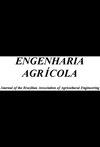种子批次排序的拟合数据挖掘设置
IF 0.9
4区 农林科学
Q3 AGRICULTURAL ENGINEERING
引用次数: 0
摘要
本文章由计算机程序翻译,如有差异,请以英文原文为准。
FITTING Data Mining Settings for Ranking Seed Lots
To enhance speed and agility in interpreting physiological quality tests of seeds, The use of algorithms has emerged. This study aimed to identify suitable machine learning models to assist in the precise management of seed lot quality. Soybean lots from two companies were assessed using the Supplied Test Set, Cross-Validation (with 8, 10, and 12 folds), and Percentage Split (with 66% and 70%) methods. Variables analyzed through Tetrazolium tests included vigor, viability, mechanical damage, moisture damage, bed bug damage, and water content. Method performance was determined by Kappa, Precision, and ROC Area metrics. Classification Via Regression and J48 algorithms were employed. The technique utilizing 66% of data for training achieved 93.55% accuracy, with Precision and ROC Area reaching
求助全文
通过发布文献求助,成功后即可免费获取论文全文。
去求助
来源期刊

Engenharia Agricola
AGRICULTURAL ENGINEERING-
CiteScore
1.90
自引率
20.00%
发文量
62
审稿时长
4-8 weeks
期刊介绍:
A revista Engenharia Agrícola existe desde 1972 como o principal veículo editorial de caráter técnico-científico da SBEA - Associação Brasileira de Engenharia Agrícola.
Publicar artigos científicos, artigos técnicos e revisões bibliográficas inéditos, fomentando a divulgação do conhecimento prático e científico na área de Engenharia Agrícola.
 求助内容:
求助内容: 应助结果提醒方式:
应助结果提醒方式:


